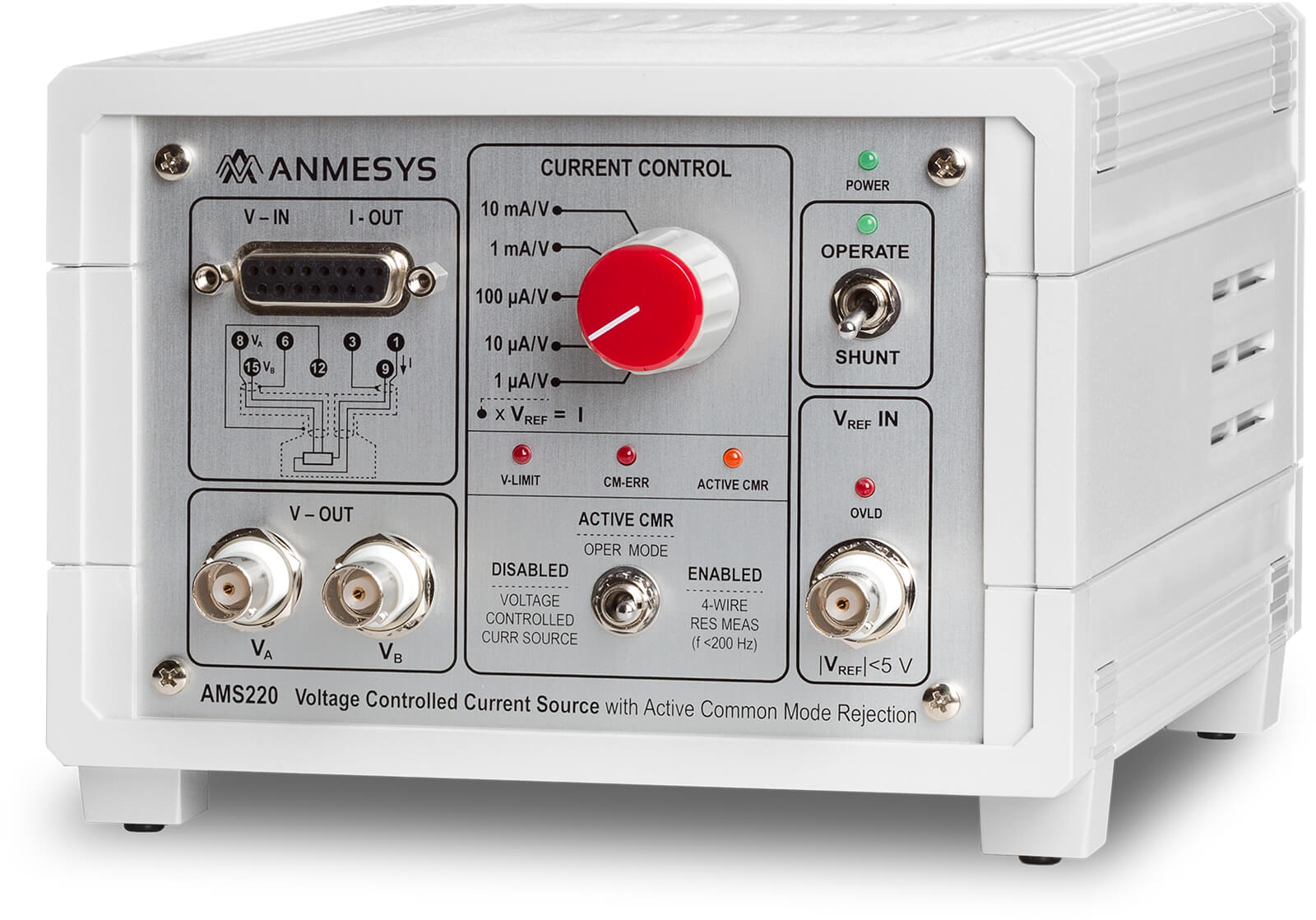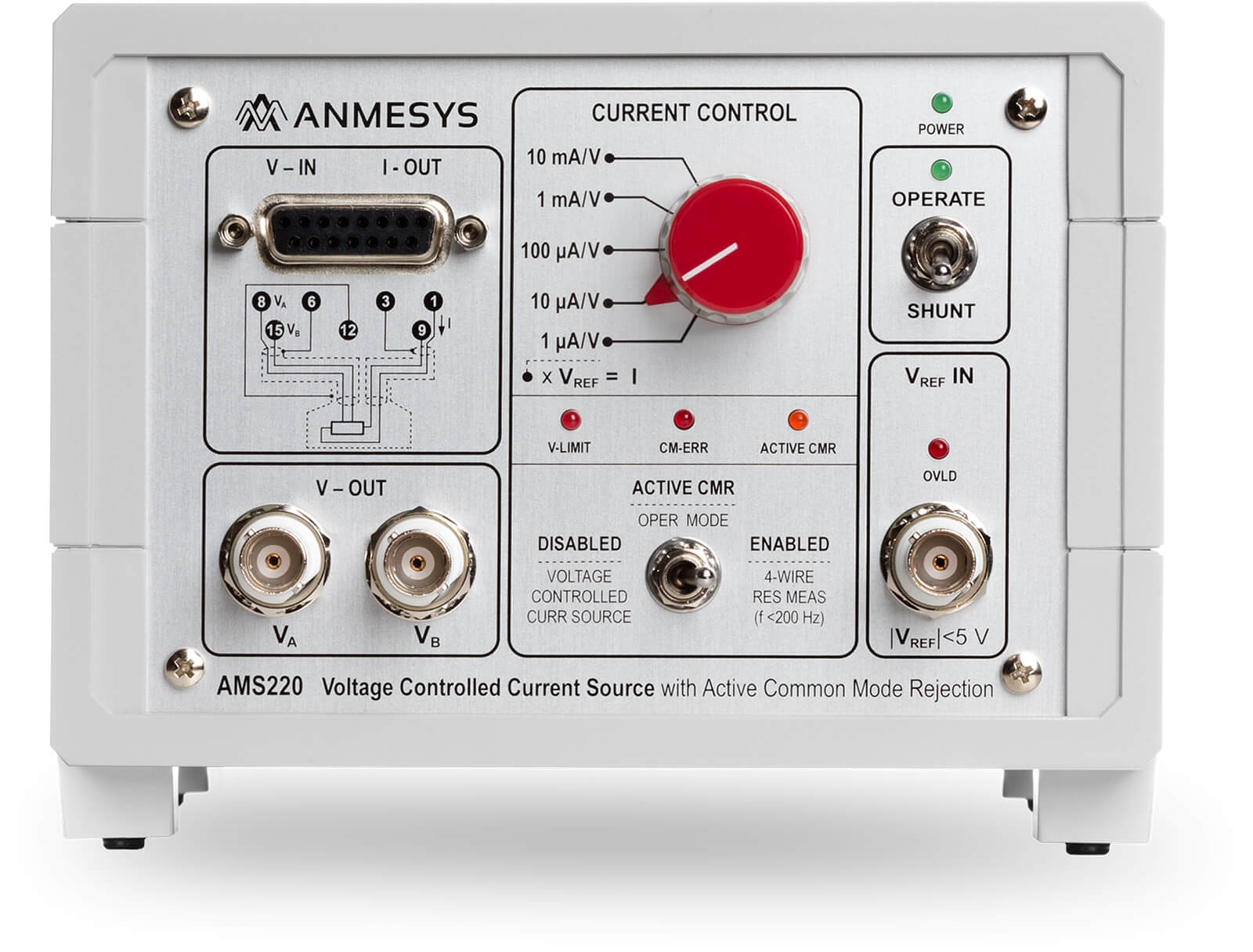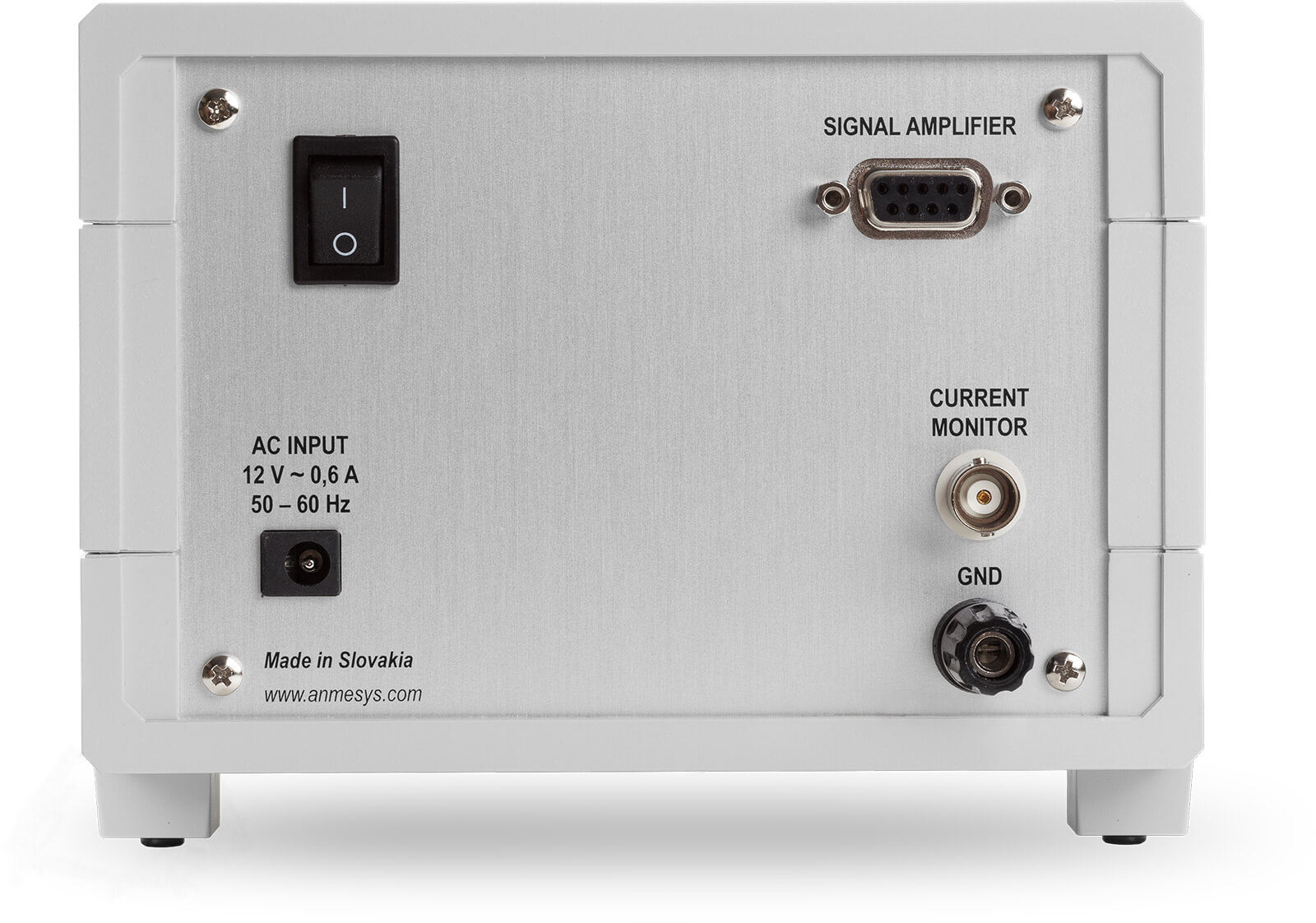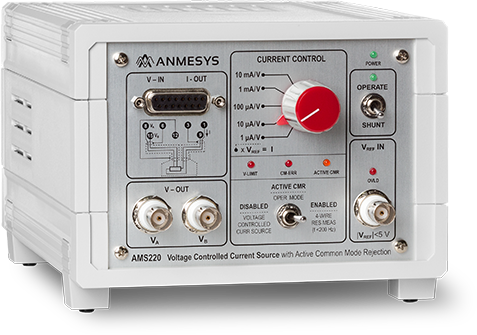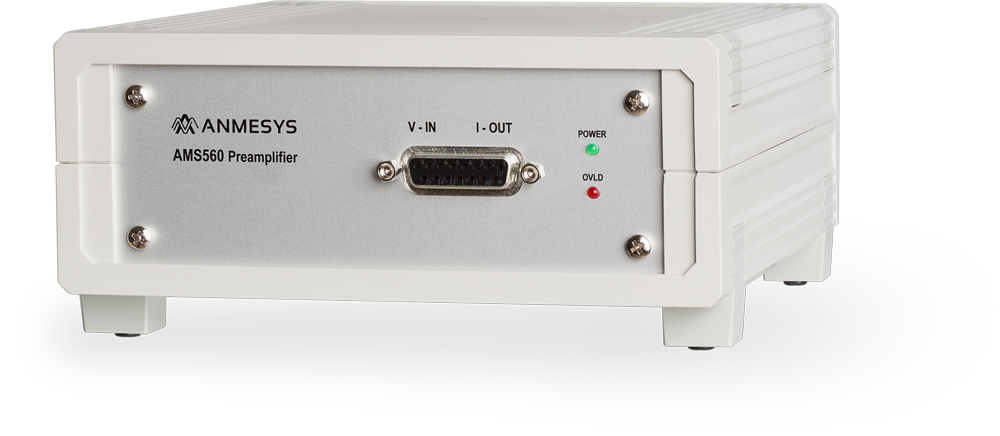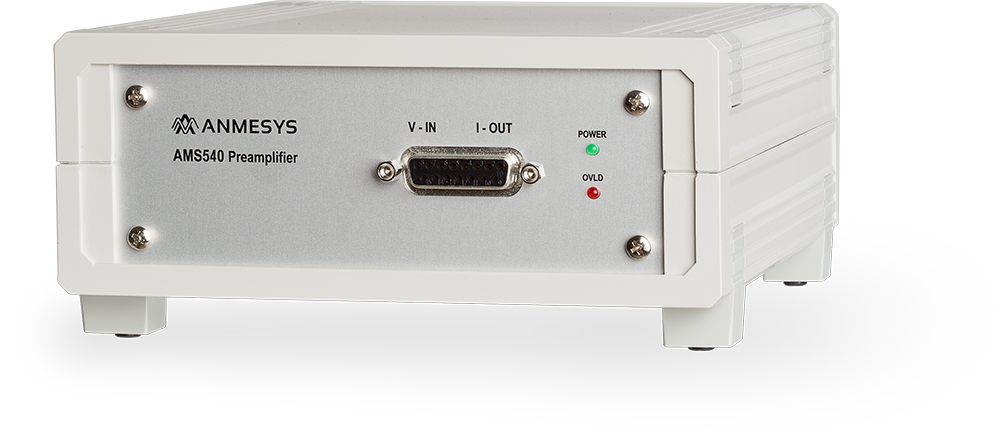AMS220
Voltage Controlled Current Source with Active Common Mode Rejection
Features
- Patented common mode rejection technology
- Output current to ±50 mA
- Voltage-to-current conversion ranges from 1µA/V to 10 mA/V
- ±5V control voltage input range
- Low-noise, all analog design
- Easy to use with DAQ devices
- Optimized for use with lock-in amplifiers
Related documents
Targeted applications
Replacement for AC resistance bridges when used with lock-in amplifiers
- Very low resistance masurements down to mK temperatures
- Superconductivity research
- Hall effect phenomena
- Higher harmonic detection in resistance measurements
- Thermometry/calorimetry
- Mutual inductance measurements
AC and DC electrical measurements with DAQ devices
- Cost-effective solution for resistance measurements and thermometry
- I-V curves measurements
Replaces floating current sources in resistance measurements
Precision low resistance measurements in the most demanding conditions
The AMS220 Voltage Controlled Current Source with Active Common Mode Rejection brings a unique possibility for researchers to perform low-level electrical measurements requiring precise current excitation at the negligible level of common mode voltage. The AMS220 is preferentially designed for low resistance measurements using a lock-in amplifier. The measurements of very low resistances become a routine when using the AMS220 in combination with a highly sensitive lock-in amplifier, even in the most demanding conditions, e.g measurements of resistances less than 1 mOhm at temperatures below 500mK. The combination of the lock-in technique (which enables to perform very-low voltage measurements also in the background of significant disturbance signals, if common mode signals are sufficiently low) and the unique, patented, architecture of the AMS220 (which ensures active rejection of common mode signals that arise at current excitation of the load) opens new experimental possibilities especially for researchers working in the field of superconductivity and electrical transport phenomena.
Alternatively, the AMS220 can be also used in combination with DAQ devices in many types of DC or AC electrical measurements, where well defined current excitation of D.U.T. is required. Applications include e.g., resistance measurements, thermometry, or I-V curves measurements.
Technical Specifications
| Voltage-to-current conversion ranges | 0.001, 0.01, 0.1, 1 and 10 [mA/V] |
| Control voltage (VREF) input range (AC/DC) | 0 ÷ 3.6 V (rms) / -5 V ÷ +5 V (DC) |
| Input resistance of the control voltage input | 100 kΩ |
| Maximum output current AC/DC | 36 mA (rms) / ±50 mA (DC) |
| Accuracy of the voltage-to-current conversion (DC) | 0.08 % |
| Temperature drift | 50 ppm/°C |
| Operating modes | ACTIVE CMR – ENABLED (active common mode voltage rejection is activated) ACTIVE CMR – DISABLED (current output IB is grounded) |
| Targeted frequency range for ACTIVE CMR – DISABLED operation mode | DC – 20 kHz (DC – 2 kHz for 1 μA/V range) |
| Targeted frequency range for ACTIVE CMR – ENABLED operation mode | DC–200 Hz |
| Operating voltage swing on the current output IA against the reference ground (typ.) | up to ±[6.5 V – |VREF/2|] (±0.3 V) |
| Operating voltage swing on the current output IB against the reference ground (typ.) | up to ±6.6 V (±0.3 V) |
| Operating range of voltage differences on the current outputs IA, IB (typ.) | up to ±13.4 V |
| Maximum voltage at the current outputs (against the reference ground) | ±10 V |
| Maximum voltage difference on the current outputs | ±20 V |
| Power supply | 12 V AC / 50-60 Hz |
| Maximum power input | 7 W |
| Dimensions (L × W × H) | 230 mm × 158 mm × 120 mm |
| Weight | 2.3 kg |

